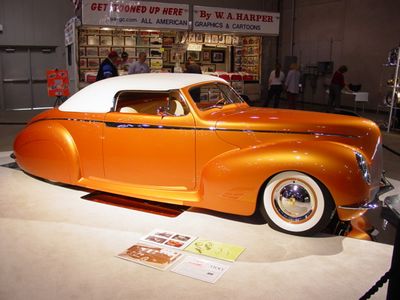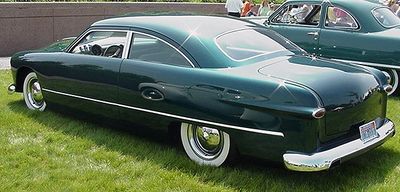Harry Bradley

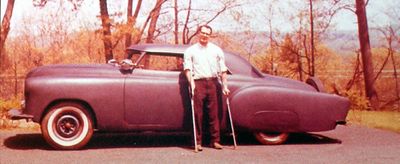

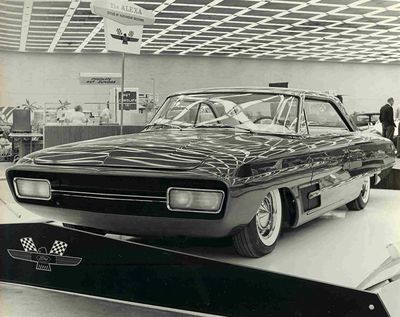



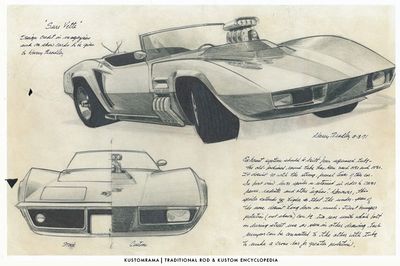



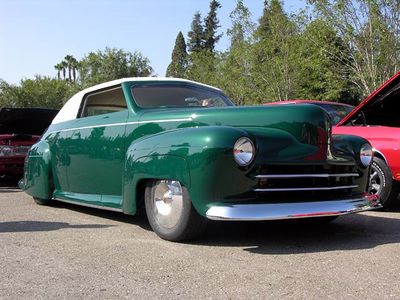

Harry Bentley Bradley (May 25, 1936 - May 13, 2023) was an American car designer who had previously worked for General Motors and Mattel. He began working for Mattel in 1966, designing the original line of Hot Wheels before leaving the company in 1969.
Harry was born in 1936 in Boston, Massachusetts. He began to draw early and nurtured his artistic talent through youth classes at the Museum of Fine Arts. During the summer of 1949, fourteen-year-old Harry contracted Polio and was soon paralyzed from the waist down. Harry was treated at the Boston Children's Hospital for seven months. He passed the time with drawing. Nurses would place his wheelchair by a window overlooking the street so he could sketch automobiles. For the first few months at home, he used a wheelchair, of which he was very proud. He added lots of decorations – mirrors with reflectors, squeeze-bulb horns, handgrips with red, white, and blue vinyl streamers – and a fox tail hanging at the rear. It was his first customized vehicle! After learning to live with leg braces, Harry went on to finish grade school and became further entrenched in the car culture of the early 1950s.
Harry got into the early fifties Chevys after borrowing an all-black 1950 Chevrolet Bel Air from the guy dating his sister. He started to make sketches and designs, making plans for his own car. After a couple of years, he wrangled a cherry red 1951 Chevrolet Bel Air from his parents. This happened in 1954. The Chevy had been the milkman's car. When he got it, Harry promised his parents that he wouldn't touch the car, never. But it was too late; his parents didn't have a chance against the inspiration Harry had gotten from people like PininFarina, Harley Earl, Joe Bailon, and the Barris Brothers. The Chevrolet would become known as the La Jolla, and Harry would become a member of the Drivin Deuces car club.
Harry attended the College of Wooster for a liberal arts education at the urging of his parents, but his real goal was a career in automobile design. He wrote to General Motors asking about job opportunities, and their response suggested the industrial design program at Pratt Institute. While attending the design program, Harry launched his own business as a custom design consultant and began to contribute regularly to various automotive publications such as Rodding and Re-styling, Customs Illustrated, and Rod & Custom.
Harry was recruited by General Motors during his last semester at Pratt and moved to Detroit in July 1962. It was against General Motors company policy to publish designs for Hot Rod and Custom Magazines while working for General Motors, so Harry continued to publish his design under the false name Mark Fadner. Within weeks of his arrival at GM Design Staff, Harry and the Alexander Brothers had forged a relationship that would result in more than 10 Bradley-designed custom cars over the next eight years. While working for the Cadillac design studio, Harry designed the Alexa, a 1964 Ford fastback Galaxie for the Alexander Brothers. The car was part of the Ford Custom Caravan, so needless to say, working for Ford's interest while working for General Motors would have threatened Harry's job, so Mike and Larry Alexander credited Harry as Designer X. The threat wasn't much of a deterrent; Bradley and the brothers designed and built several more Caravan cars.
Harry worked for GM for four years. During his time there, he worked for a number of studios. Harry took advantage of GM's fellowship study program for a Master's degree at Stanford University. In 1964, while studying in California Harry designed the Dodge Deora for the Alexander Brothers.
In the spring of 1966, Harry was recruited by the Mattel Corporation. Mattel wanted to hire a designer from one of Detroit's "Big 3" to create the look of their new Hot Wheels die-cast cars, so Elliot Handler of Mattel sent Fred Adickes to Detroit to find what they were looking for. Adickes placed an ad in the local Detroit newspaper. The response was surprisingly low, but Adickes returned with Harry Bradley. Harry saw the job at Mattel as a great opportunity to return to California. With Mattel paying the gas money, Harry drove his 1964 Chevrolet El Camino to California. Bradley's mix of hot rod and mainstream car design proved the perfect combination. The original line had 16 models in bright candy colors with carburetor stacks, mag wheels, chopped roofs, and red line tires. The cars were released in 1968 and all of the cars were designed by Harry Bentley Bradley with the exception of the Custom Volkswagen which was designed by Ira Gilford.
As it turned out, the Hot Wheels brand was a staggering success! Unfortunately, Harry Bentley Bradley didn't think that would be the case and quit Mattel in 1969. When the company asked him back, he recommended a good friend, Ira Gilford. Gilford, who just had just left Chrysler, quickly accepted the job of designing the next Hot Wheels models. Harry resigned to start his own design firm and began work on a variety of projects, designing everything from plastic model kits to full-size hot rods and custom cars.
Harry passed away on May 13, 2023, almost 87 years old.[1]
Harry Bradley's Personal Cars
Harry Bradley's 1951 Chevrolet Bel Air - La Jolla
Harry Bradley's 1964 Chevrolet El Camino - Blind Faith
Cars Designed by Harry Bradley
The Dodge Deora
The Alexa
Jake Babcock's 1940 Mercury - Afterglow
Robert E. Larivee, Jr. and Peter A. Toundas' 1941 Ford - The Eagle One
Dave Crook's 1947 Ford
Jack Barnard's 1949 Ford
Tom Kelly's 1969 Chevrolet Corvette
Dave Crook's 1970 Pontiac Firebird
The Oscar Meyer Weiner Mobile
Sources
Harry Bentley Bradley American Automotive Design Innovator
cardesignart.blogspot.com
Motor Trend
Wikipedia
Rik Hoving Custom Car Photo Archive
DieCastX Magazine Fall 2008
References
Did you enjoy this article?
Kustomrama is an encyclopedia dedicated to preserve, share and protect traditional hot rod and custom car history from all over the world.
- Help us keep history alive. For as little as 2.99 USD a month you can become a monthly supporter. Click here to learn more.
- Subscribe to our free newsletter and receive regular updates and stories from Kustomrama.
- Do you know someone who would enjoy this article? Click here to forward it.
Can you help us make this article better?
Please get in touch with us at mail@kustomrama.com if you have additional information or photos to share about Harry Bradley.
This article was made possible by:
SunTec Auto Glass - Auto Glass Services on Vintage and Classic Cars
Finding a replacement windshield, back or side glass can be a difficult task when restoring your vintage or custom classic car. It doesn't have to be though now with auto glass specialist companies like www.suntecautoglass.com. They can source OEM or OEM-equivalent glass for older makes/models; which will ensure a proper fit every time. Check them out for more details!
Do you want to see your company here? Click here for more info about how you can advertise your business on Kustomrama.
